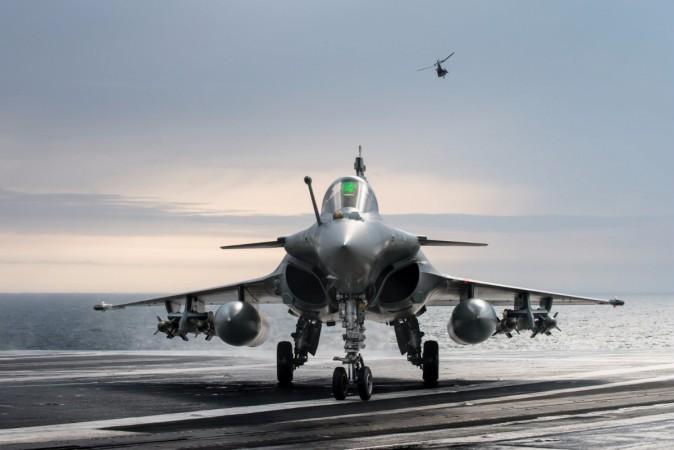
The induction of Rafale multirole air-superiority fighter jets into the Indian Air Force (IAF) puts beyond doubt India's total dominance of the subcontinental airspace, experts say. When Defence Minister Rajnath Singh took delivery of the first of the 36 Rafale warplanes India is buying from French aircraft maker Dassault in Bordeaux on Tuesday, the balance of power in the region was shifting decisively in India's favour.
It is significant that the two squadrons of the twin-engine Rafale warplanes the IAF is buying will be based at Ambala airforce base in Haryana, within earshot of the international border with Pakistan. There have been suggestions that the presence of an advanced fighter like Rafale in such proximity would have deterred the Pakistan Air Force (PAF) from the misadventure of crossing over to Indian air space on February 27 a day after IAF jets bombed the Balakot terror training camp deep inside Pakistani territory of Khyber-Pukhtunkhwa to avenge the Pulwama attack.
Although IAF already has other twin-engine air-superiority fighters in Sukhoi-30MKI and MiG-29, their radars and missile systems are suspect when squared up against US-made F-16s armed with the AIM-120 advanced medium-range air-to-air missile (AMRAAM). IAF's longest-range air-to-air missile is Russian-built R-77, which sources say, cannot realistically be expected to be accurate beyond 80km while F-16s fired their AIM-120s at close to the maximum range of 100km.
What features make Rafale one of the more feared, high-performance deterrents for air forces around the world?

The twin-engine fighter with single- and double-crew configurations can cruise at Mach 1.1 (more than the speed of sound) at low altitude and reach up to Mach 1.8 at higher altitudes. The warplane has an impressive range of more than 3,700km with a combat radius of 1,850km and a rate of climb, which is critical in dogfights, of 340 metres per second with a service ceiling of 15,285 metres.
The weaponry that the fighter can carry is even more impressive. India will be integrating European-made Meteor long-range beyond visual range (BVR) air-to-air missile into Rafale so that enemy aircraft can be stopped long before they get close enough to track the Indian fighter. Meteor has an effective range of 150km with three guidance methods making if deadly and practically no escape zone, which is the distance at which enemy aircraft has a chance of successful evasive action.
(Two IAF Su-30MKIs had to take evasive action at almost 100km distance to escape incoming AIM-120 AMRAAMs fired by F-16, during the February 27 skirmish over the Line of Control (LoC) in Kashmir. ) Rafale aircraft will also have the long-range SCALP (British name Storm Shadow) cruise missile which can hit ground targets up to 1,000km away, which would cover most of the Pakistani cities from within the Indian airspace
Compared to Rafale's performance, F-16 has a range of 1,450km with a combat radius of 550km and a rate of climb of 250 meters per second. The AIM-120 air-to-air missile is capable of hitting targets at up to 100km but has an escape zone of 60km, which providentially saved the two Su-30MKIs on February 27.
The 36 Rafale jets coming at a price of about $8.7 billion will be able to take off from high-altitude bases like Leh and will be of critical support to Kargil-like situations. Though the Indian skies will see the jets only by May next year, the IAF pilots will be fully trained with its systems by then.

















